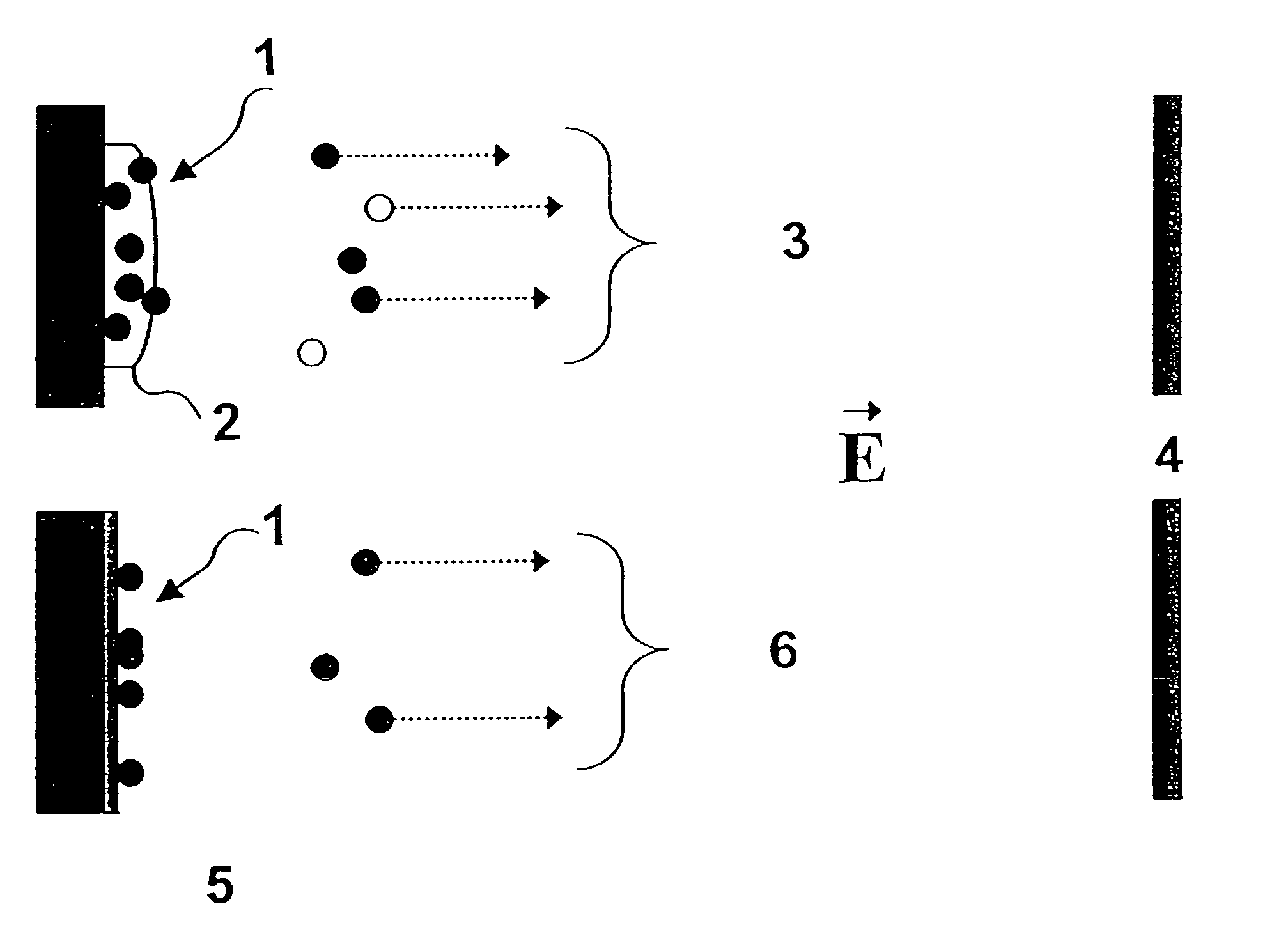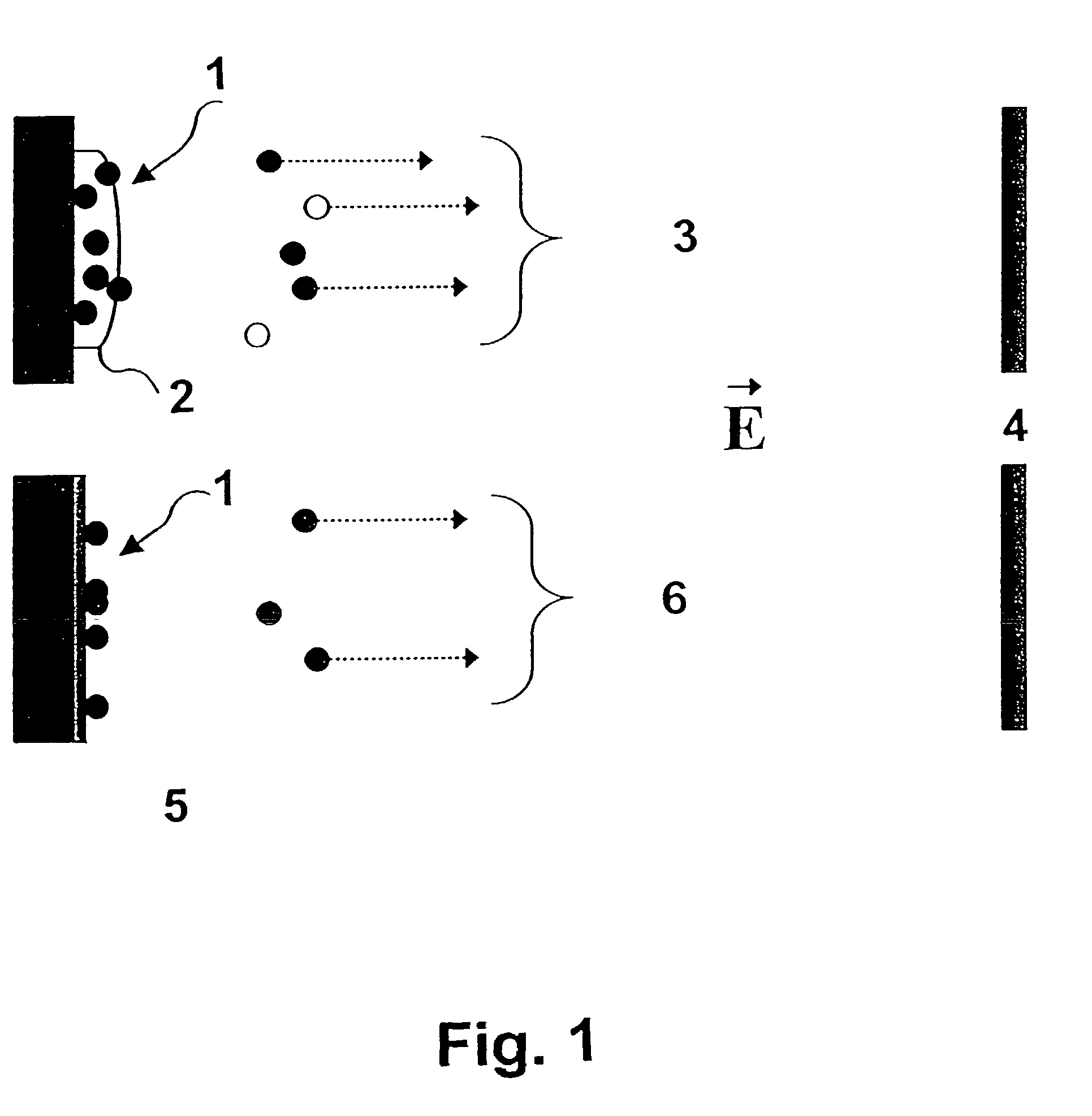Matrix-free desorption ionization mass spectrometry using tailored morphology layer devices
a morphology layer and mass spectrometry technology, applied in the field of customized morphology material systems, can solve the problems of complex spectrum analysis, limited application of the most popular and widely used laser-based technique, maldi (matrix-assisted laser desorption-ionization), and matrix molecules themselves providing background in the signal
- Summary
- Abstract
- Description
- Claims
- Application Information
AI Technical Summary
Benefits of technology
Problems solved by technology
Method used
Image
Examples
Embodiment Construction
[0029]Referring now to FIG. 1, there is shown a schematic representation of the MALDI and the method of the present invention. Ultra-violet light (337 nm) 1 impinges matrix 2 to provide sample and matrix ions and neutrals 3 to reach detector 4.
[0030]Referring now to FIG. 5 which shows devices of various materials, FIG. 5a shows a device having a high surface area to volume ratio film or layer of columnar silicon 11 on a plastic substrate 10. The functions of the columnar silicon layer 11 are absorption, optical coupling, and immobilization. Advantages of this device include, but are not limited to, one-step production, inexpensive substrate material, and high molecular immobilization.
[0031]FIG. 5b shows a device having a layer of silicon dioxide 15 on a layer of amorphous silicon 12, on a layer of metal 13, on a glass substrate 14. The function of the amorphous silicon layer 12 is light absorption. The metal 13 and silicon dioxide 15 provide optical coupling; also, the silicon dioxi...
PUM
| Property | Measurement | Unit |
|---|---|---|
| Thickness | aaaaa | aaaaa |
| Thickness | aaaaa | aaaaa |
| Thickness | aaaaa | aaaaa |
Abstract
Description
Claims
Application Information
 Login to View More
Login to View More - R&D
- Intellectual Property
- Life Sciences
- Materials
- Tech Scout
- Unparalleled Data Quality
- Higher Quality Content
- 60% Fewer Hallucinations
Browse by: Latest US Patents, China's latest patents, Technical Efficacy Thesaurus, Application Domain, Technology Topic, Popular Technical Reports.
© 2025 PatSnap. All rights reserved.Legal|Privacy policy|Modern Slavery Act Transparency Statement|Sitemap|About US| Contact US: help@patsnap.com



